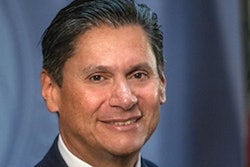Parents want to hear directly from colleges about the true cost of attendance. If institutions can improve their communication with families, they can help to close equity gaps in higher education.

“What we saw from this data is that family members who have students of color have even more intense concerns about things like costs, safety, culture, as all parents do,” said Michael Koppenheffer, vice president of marketing programs at EAB and contributing consultant for the report. “If [institutions] did a better job addressing these concerns, they’re going to influence college going rates and support greater equity within individual institutions and overall.”
EAB found that Generation X parents have less wealth, more debt, are increasingly anxious, less trusting, and more transactional than parents of the past. For these reasons, parents are hyper-cautious about whether or not college is a good investment for their child.
Communicating with families is even more important as high schools may not have enough counselors or resources to guide all of their students. Experts urge institutions to be creative in reaching out to parents, through virtual meetings or guidance from experienced students, to share information with minoritized communities and walk parents through the trickier parts of a college application process, including filling out the FAFSA form each year.
“There’s a big opportunity for colleges and universities to communicate that they are not, by and large, taking advantage of. There is a willing audience here, [parents] are hungry for information, and institutions can do way more to fulfill it,” said Koppenheffer. “A distinct minority [of institutions] said, ‘We have a comprehensive plan of talking to parents, from sophomore year and beyond,’ a typically recognized point when students start engaging with colleges in a very preliminary way.”
 Dr. Zoë B. Corwin, a research professor at the University of Southern California (USC) and director of the Digital Equity in Education project at the Pullias Center of Higher Education.
Dr. Zoë B. Corwin, a research professor at the University of Southern California (USC) and director of the Digital Equity in Education project at the Pullias Center of Higher Education.
















